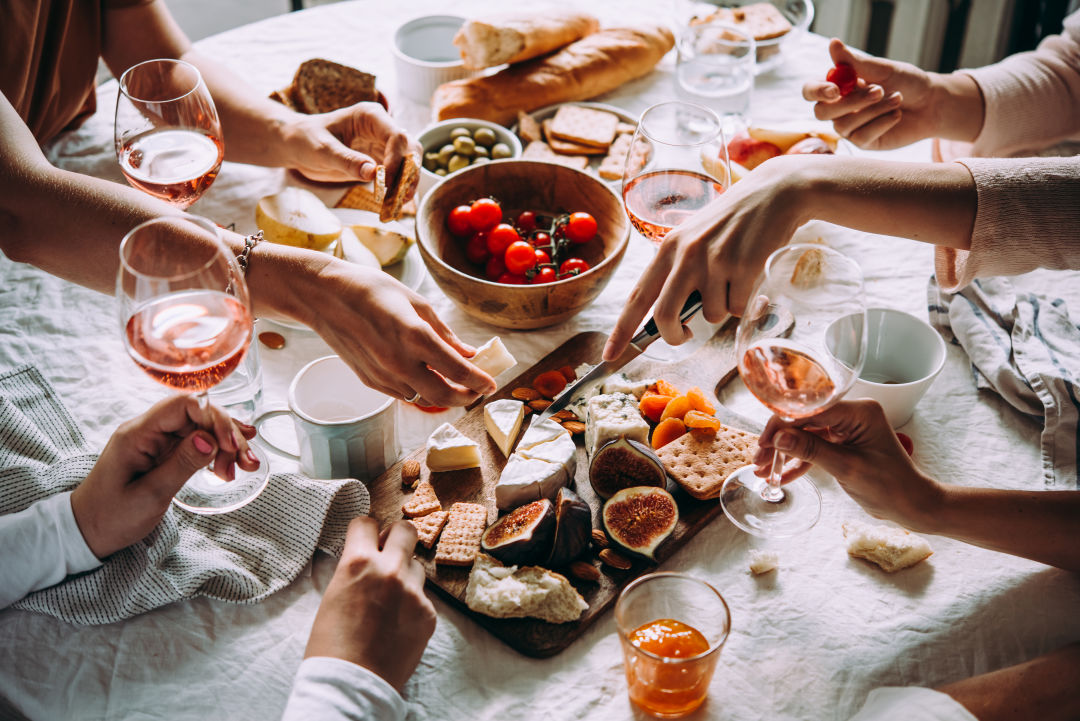The Ultimate Summer Wine? Rosé.

Image: Shutterstock
Summer is the time for lighter wine. Salads for lunch and hors d’oeuvres by the pool deserve a wine more delicate than cabernet sauvignon or chardonnay. Sauvignon blanc is certainly acceptable, but a rosé fills the bill even better. This light and sprightly chilled pink wine balances many foods and leaves your palate clean and fresh.
The popularity of this uplifting wine is such that celebrities are falling over themselves to make them. Brad Pitt and Angelina Jolie (pre-divorce) put their names on Miraval, Jon Bon Jovi has Hampton Water and rapper Post Malone has Maison No. 9, and there are many others. Wine stores and wine lists show an ever-increasing number of selections. During a recent visit to ABC, I counted over 30 rosé selections.
Nearly every wine-producing country creates rosé wine. In Italy it’s called rosato and in Spain it’s rosado. And it’s not unusual for producers to create a catchy name like “Whispering Angel.”
Rosé is made in the simplest way possible. Red grapes (usually Grenache) are allowed to macerate on their skins for a few hours to a day. Longer would result in a deep red wine. This brief period produces a pink-hued dry wine with about 12 percent alcohol. (Red wine can be mixed with white to produce a rosé, but the practice is banned in most countries.)
It’s likely that rosé wines were first made in ancient times. Our ancestors had no modern machinery like wine presses, so simple winemaking produced simple wines. In fact, lighter wines, like early cabernet sauvignon (called claret) were preferred by European consumers. After World War II, some French producers decided to market sweet rosé under the labels Mateus and Lancers, and they became wildly popular in the U.S.
In 1972, the California winery Sutter Home produced a pink wine which it called "white zinfandel." Slightly sweet, it grew quickly in popularity and dominated the new “blush wine” market for decades. Today, most American rosés are referred to as blush wines.
I recently tried a few popular French rosés at a wine bar and at home. Here are my thoughts:
Whispering Angel By Caves Desclans, 2019
I tasted this rosé, the world’s most popular rosé, at Siesta Key Wine Bar. Very light peach in color, it demonstrated a clean, fresh mouth feel and aftertaste. However, it showed minimal body and fruit character. $10 per 6-ounce glass, $13 per 9-ounce glass or $22.99 by the bottle.
Les Ligeriens Rosé D’Anjou, 2019
Pale peach in color, this wine displayed an essence of raspberries in the aroma. Made from cabernet franc and gamay grapes, it also produced a clean and fresh taste with a higher degree of sweetness than the other selections. $15 per bottle, retail.
Chateau Trians, Provence, 2019
Pale peachy-orange in color. Made from grenache grapes, it revealed a slight strawberry aroma and taste. Mouth feel was crisp, with a slight sweetness. $10 per bottle, retail.
Bob McGinn has spent his entire career in the wine industry—forming wine clubs, working in wine sales marketing and engaging in all facets of the winemaking process, including vine management, fermentation and yeast analysis. He has developed wine programs for companies such as Marriott, Sheraton and Smith & Wollensky, and consults with local restaurants. You can read more of McGinn’s work at gulfcoastwinejournal.com.